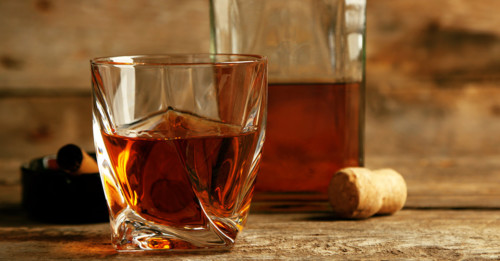Canadian Whisky Essential Info
- Color: Light to dark amber
- Region: Canada
- ABV: Minimum 40% ABV
- Aged: Minimum 3 years in wood barrels
- Made from: Corn and rye
- Commercial Examples: Canadian Club, Forty Creek, Highwood, Still Waters, Crown Royal
- Popular Cocktails: Can be used in a variety of whisky cocktails depending on style (i.e. rye or corn content); rye heavy Canadian whiskies can be used as Rye whiskey generally
If Scotch and Bourbon dominate the whisk(e)y market in swagger, Irish and Canadian whiskies are the two dark horses quietly making a comeback. Like Irish whiskey—which lost its once mega-market share due to a few historical speedbumps, including Prohibition—Canadian whisky once enjoyed more prestige in America, especially when the Civil War forced U.S. whiskey production to shut down and we looked to our neighbors to the North for some much-needed liquid courage.
And like Irish whiskey, Canadian whisky still suffers some misconceptions. Among them, that it’s basically interchangeable with Rye whiskey. Rye does do better in colder Canadian climates, and Canadian whiskies have been made with larger proportions of rye, but there’s no law dictating any minimum quantity of rye in Canadian whisky, and most Canadian whiskey today is made with a corn-heavy mash bill. There are actually very few laws governing the production of Canadian whisky. Basically, it has to be whiskey that’s produced in Canada and aged in 700-liter wood barrels for a minimum of three years. What’s distilled, how it’s distilled, and what variety of cask it’s aged in is up to the producer.
That doesn’t mean Canadian whisky is some kind of chaotic mixed bag. If anything, it’s an interesting and evolving market. Most Canadian whiskies are blends of a lighter, triple-distilled grain spirit and a smaller proportion of richer (often rye-heavy, but also potentially corn-heavy) “flavoring” spirit. And the resurgence in interest has Canadian distilleries exploring their options from the mash bill to distillation and aging. Flavors can span the gamut from bourbon-like (vanilla, caramel, toffee) to fruity and spicy (especially where rye comes into play), with more variety where special cask-finishing comes into play.
